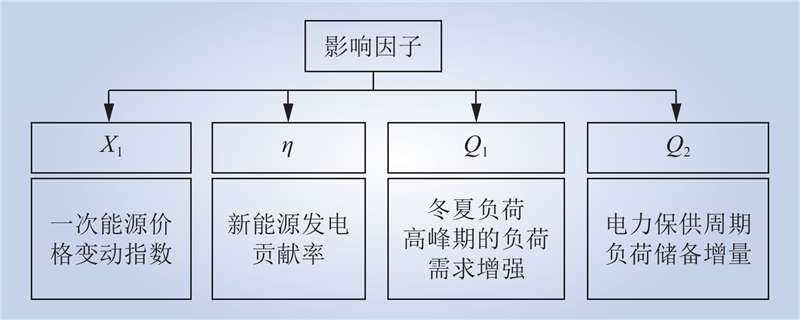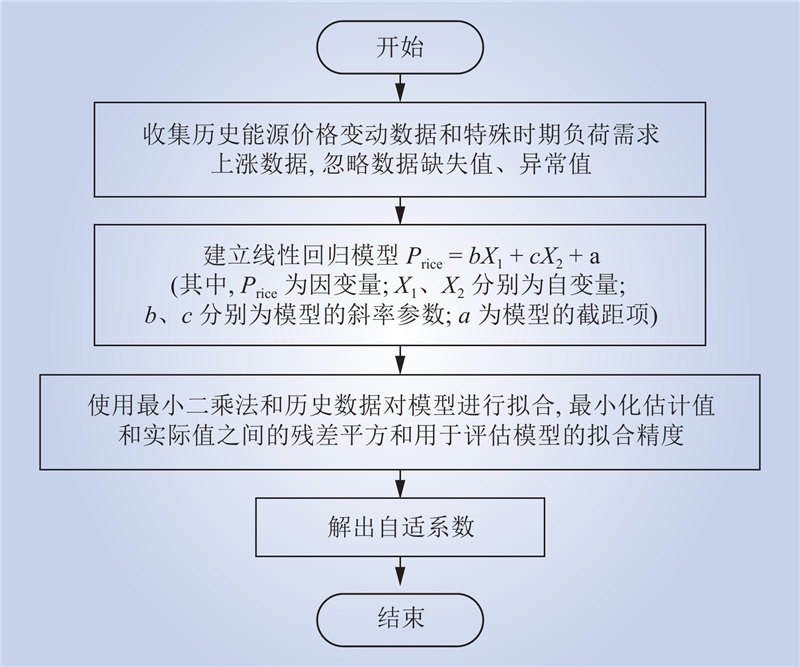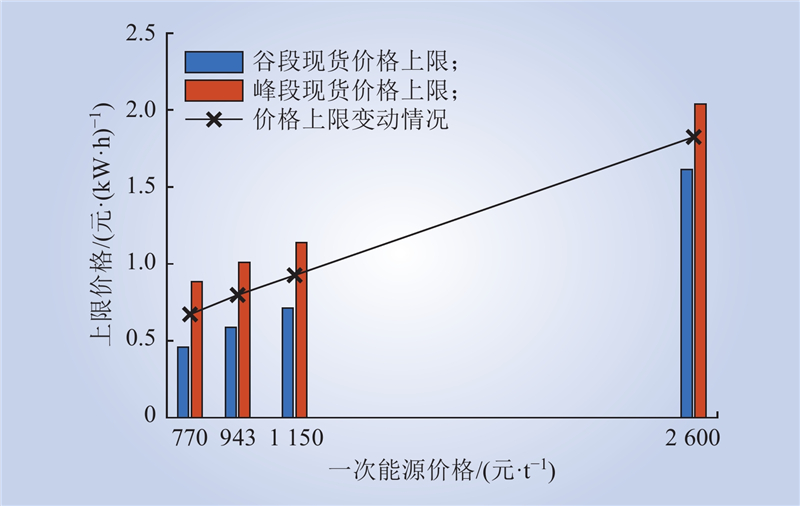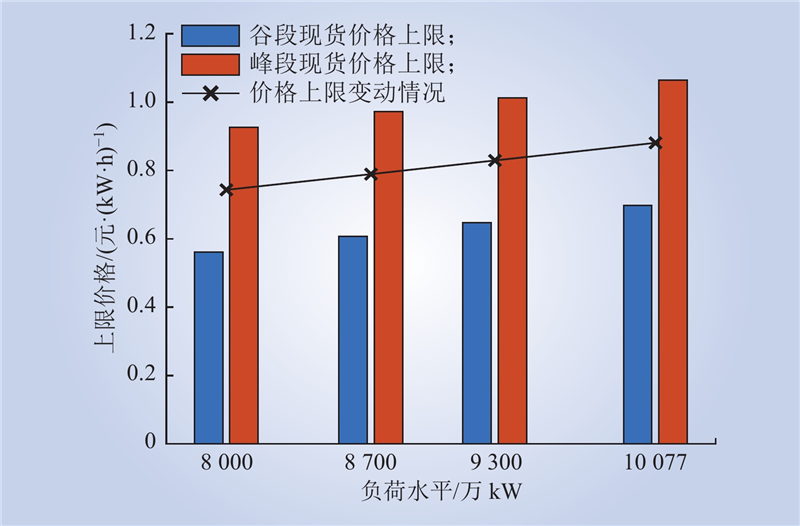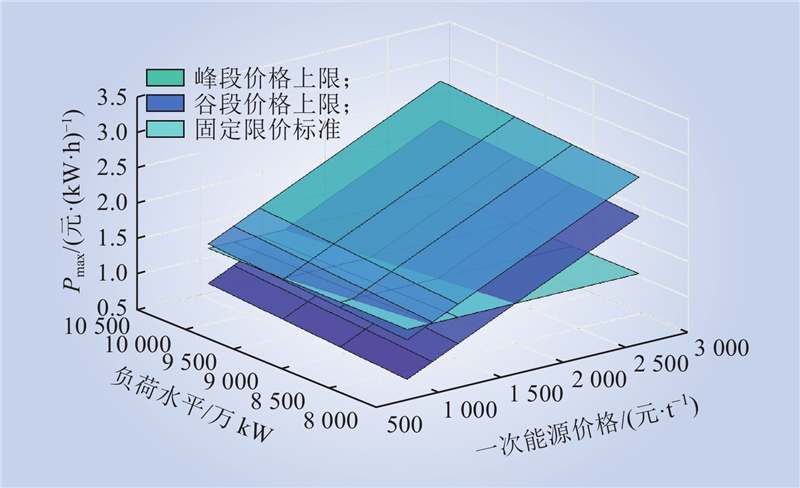| 1 |
马莉, 范孟华, 曲昊源, 等. 中国电力市场建设路径及市场运行关键问题[J]. 中国电力, 2020, 53 (12): 1- 9.
|
|
MA Li, FAN Menghua, QU Haoyuan, et al. Construction path and key operation issues of electricity market in China[J]. Electric Power, 2020, 53 (12): 1- 9.
|
| 2 |
代江, 朱思霖, 田年杰, 等. 基于储能灵活能量状态的现货电能量-辅助服务市场联合出清机制[J]. 南方电网技术, 2024, 18 (1): 58- 68.
|
|
DAI Jiang, ZHU Silin, TIAN Nianjie, et al. Joint clearing mechanism of spot power energy-auxiliary service market considering flexible state of energy in energy storage[J]. Southern Power System Technology, 2024, 18 (1): 58- 68.
|
| 3 |
许星原, 陈皓勇, 黄宇翔, 等. 虚拟电厂市场化交易中的挑战、策略与关键技术[J]. 发电技术, 2023, 44 (6): 745- 757.
|
|
XU Xingyuan, CHEN Haoyong, HUANG Yuxiang, et al. Challenges, strategies and key technologies for virtual power plants in market trading[J]. Power Generation Technology, 2023, 44 (6): 745- 757.
|
| 4 |
蔡葆锐, 梁彦杰. 考虑跨省优先计划及输电费的南方区域电力现货市场出清模型设计[J]. 南方电网技术, 2023, 17 (12): 42- 51.
|
|
CAI Baorui, LIANG Yanjie. Electricity spot market clearing model designing of Southern China Region considering inter-provincial plan and transmission cost[J]. Southern Power System Technology, 2023, 17 (12): 42- 51.
|
| 5 |
王志轩, 张晶杰, 董博, 等. “双碳” 目标下燃煤电厂灵活性改造及政策建议[J]. 电力科技与环保, 2024, 40 (3): 213- 220.
|
|
WANG Zhixuan, ZHANG Jingjie, DONG Bo, et al. Reserch on technology and policy of flexibility renovation for coal-fired power plants under carbon peaking and carbon neutrality goal[J]. Electric Power Technology and Environmental Protection, 2024, 40 (3): 213- 220.
|
| 6 |
王正风, 王吉文, 高卫恒, 等. 电力现货市场阻塞费用结算机制分析[J]. 浙江电力, 2024, 43 (1): 57- 63.
|
|
WANG Zhengfeng, WANG Jiwen, GAO Weiheng, et al. Analysis of congestion cost settlement mechanisms in electricity spot market[J]. Zhejiang Electric Power, 2024, 43 (1): 57- 63.
|
| 7 |
任大伟, 侯金鸣, 肖晋宇, 等. 支撑双碳目标的新型储能发展潜力及路径研究[J]. 中国电力, 2023, 56 (8): 17- 25.
|
|
REN Dawei, HOU Jinming, XIAO Jinyu, et al. Research on development potential and path of new energy storage supporting carbon peak and carbon neutrality[J]. Electric Power, 2023, 56 (8): 17- 25.
|
| 8 |
黄大为, 李赛龙, 孔令国. 计及中长期合同电量分解与风电报价的日前市场出清模型研究[J]. 东北电力大学学报, 2023, 43 (4): 45- 56.
|
|
HUANG Dawei, LI Sailong, KONG Lingguo. Research on day-ahead electricity market clearing model considering medium and long-term ContractsDecomposition and wind power producer bidding[J]. Journal of Northeast Electric Power University, 2023, 43 (4): 45- 56.
|
| 9 |
孙启星, 杨彪, 李司陶. 国际能源电力价格上涨及发电成本传导对我国的启示[J]. 中国电力企业管理, 2021, (31): 43- 46.
|
| 10 |
张兰, 张经纬, 肖云鹏, 等. 新加坡电力市场需求响应机制及对中国电力市场建设的启示[J]. 中国电力, 2020, 53 (9): 98- 106.
|
|
ZHANG Lan, ZHANG Jingwei, XIAO Yunpeng, et al. Demand response mechanism in Singapore electricity market and its enlightenment to China's power market construction[J]. Electric Power, 2020, 53 (9): 98- 106.
|
| 11 |
王卿然, 张粒子, 谢国辉. 动态限价机制在华东电力市场的应用研究[J]. 华东电力, 2010, 38 (6): 844- 847.
|
|
WANG Qingran, ZHANG Lizi, XIE Guohui. Application research of dynamic ceiling price mechanism at East China power market[J]. East China Electric Power, 2010, 38 (6): 844- 847.
|
| 12 |
朱峰, 刘力涵. 电力现货市场首批试点地区建设情况分析[J]. 电力需求侧管理, 2021, 23 (2): 74- 78, 94.
|
|
ZHU Feng, LIU Lihan. Analysis of construction of the first batch of pilot areas in power spot market[J]. Power Demand Side Management, 2021, 23 (2): 74- 78, 94.
|
| 13 |
赵越, 刘思捷, 白杨, 等. 国外电力现货市场价格上限设置方法综述[J]. 电力需求侧管理, 2023, 25 (3): 111- 116.
|
|
ZHAO Yue, LIU Sijie, BAI Yang, et al. Summarization of price caps setting methods in foreign electricity spot markets[J]. Power Demand Side Management, 2023, 25 (3): 111- 116.
|
| 14 |
HU Y F, GUAN X, HU B R, et al. Distributed feature selection considering data pricing based on edge computing in electricity spot markets[J]. IEEE Internet of Things Journal, 2021, 10 (3): 2231- 2244.
|
| 15 |
范宇辰, 王宗元, 刘禹彤, 等. 电力现货市场限价策略研究: 基于发电商利润空间的测算[J]. 价格理论与实践, 2023, (9): 125- 129.
|
|
FAN Yuchen, WANG Zongyuan, LIU Yutong, et al. Research on price limit strategy of power spot market—based on the calculation of profit space of power suppliers[J]. Price (Theory & Practice), 2023, (9): 125- 129.
|
| 16 |
郑淇薇, 王华霆, 陈衡, 等. 深度调峰背景下火电机组热电解耦技术路径对比分析[J]. 发电技术, 2024, 45 (2): 207- 215.
|
|
ZHENG Qiwei, WANG Huating, CHEN Heng, et al. Analysis on thermoelectric decoupling technology paths for thermal power units under the background of deep peak-shaving[J]. Power Generation Technology, 2024, 45 (2): 207- 215.
|
| 17 |
王放放, 杨鹏威, 赵光金, 等. 新型电力系统下火电机组灵活性运行技术发展及挑战[J]. 发电技术, 2024, 45 (2): 189- 198.
|
|
WANG Fangfang, YANG Pengwei, ZHAO Guangjin, et al. Development and challenge of flexible operation technology of thermal power units under new power system[J]. Power Generation Technology, 2024, 45 (2): 189- 198.
|
| 18 |
崔杨, 安宁, 付小标, 等. 面向高比例新能源电力系统调峰需求的储能容量配置方法综述[J]. 东北电力大学学报, 2023, 43 (1): 1- 8.
|
|
CUI Yang, AN Ning, FU Xiaobiao, et al. Overview of energy storage capacity allocation methods for high-proportion new energy power system peak shaving demand[J]. Journal of Northeast Electric Power University, 2023, 43 (1): 1- 8.
|
| 19 |
王文婷, 安爱民, 保承家, 等. 基于改进代价敏感直推式支持向量机的发电企业滥用市场力识别[J]. 电力系统保护与控制, 2022, 50 (11): 102- 111.
|
|
WANG Wenting, AN Aimin, BAO Chengjia, et al. Identification of abuse of market power by power generation companies based on an improved cost-sensitive transductive support vector machine[J]. Power System Protection and Control, 2022, 50 (11): 102- 111.
|
| 20 |
林顺富, 张琪, 沈运帷, 等. 面向灵活爬坡服务的高比例新能源电力系统可调节资源优化调度模型[J]. 电力系统保护与控制, 2024, 52 (2): 90- 100.
|
|
LIN Shunfu, ZHANG Qi, SHEN Yunwei, et al. Optimal dispatch model of adjustable resources in a power system with high proportion of renewable energy for flexible ramping product[J]. Power System Protection and Control, 2024, 52 (2): 90- 100.
|
| 21 |
何宇宁, 王自主, 乔依林, 等. 某330MW亚临界机组供热改造后一次调频控制策略优化[J]. 电力科技与环保, 2023, 39 (2): 120- 128.
|
|
HE Yuning, WANG Zizhu, QIAO Yilin, et al. Optimization of primary frequency control strategy for a 330MW sub-critical unit after heating transformation[J]. Electric Power Technology and Environmental Protection, 2023, 39 (2): 120- 128.
|
| 22 |
CALERO I, CAÑIZARES C A, BHATTACHARYA K, et al. Duck-curve mitigation in power grids with high penetration of PV generation[J]. IEEE Transactions on Smart Grid, 2021, 13 (1): 314- 329.
|
| 23 |
曾小青, 唐超雯. 分时电价环境下计及新能源消纳的虚拟电厂优化调度研究[J]. 电力科学与技术学报, 2023, 38 (3): 24- 34.
|
|
ZENG Xiaoqing, TANG Chaowen. Research on optimization of virtual power plants dispatch by considering the consumption of new energy under time-of-use electricity price environment[J]. Journal of Electric Power Science and Technology, 2023, 38 (3): 24- 34.
|
| 24 |
李吉峰, 唐克, 王孜航, 等. 计及多源互补特性的新型电力系统分布式电源承载能力评估[J]. 东北电力大学学报, 2023, 43 (1): 62- 68.
|
|
LI Jifeng, TANG Ke, WANG Zihang, et al. Assessment of distributed power generations bearing capacity of modern power systems with multi-sources complementary characteristics[J]. Journal of Northeast Electric Power University, 2023, 43 (1): 62- 68.
|
| 25 |
朱丹丹, 贾勇勇, 周前. 考虑负荷聚合商资源灵活度的荷源协调优化调度方法[J]. 浙江电力, 2024, 43 (4): 12- 20.
|
|
ZHU Dandan, JIA Yongyong, ZHOU Qian. A load-source coordinated scheduling method based on resource flexibility of load aggregators[J]. Zhejiang Electric Power, 2024, 43 (4): 12- 20.
|



